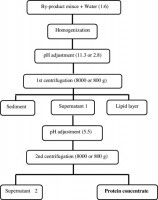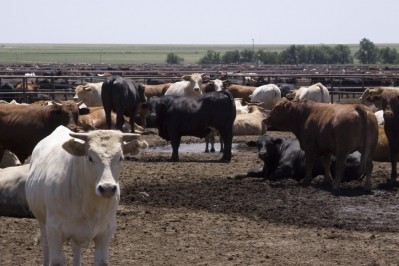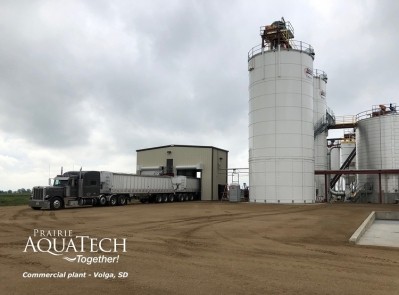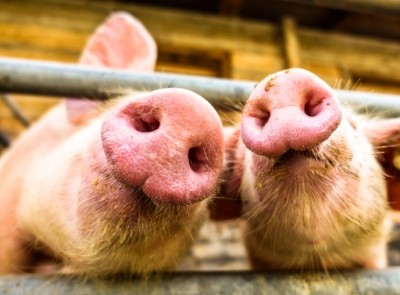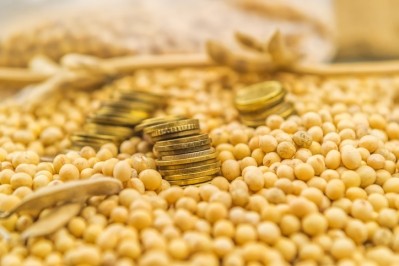Team pitches alternative to conventional fishmeal processing
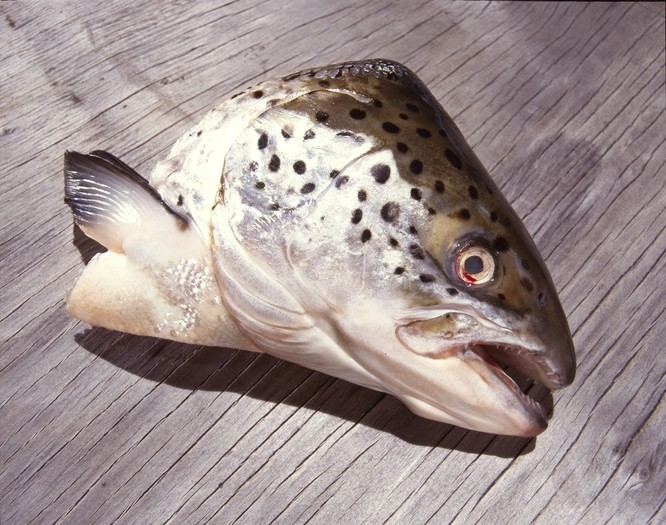
The Swedish scientists involved in the research put forward the case for the pH shift processing method in terms of protein meal generation.
“The pH-shift process could become a successful alternative to classic fish meal production.. increasing the use of fish by-products for production of protein ingredients for feed.”
The pH-shift process, they explained, was originally developed by Hultin and Kelleher (1999); they said it has been shown to be an efficient means for protein recovery from fish muscle raw materials, including herring (Clupea harengus) (Undeland et al., 2002; Nolsøe and Undeland, 2009).
The process has the advantage over, for example, enzymatic protein hydrolysis in that the proteins are not cleaved or subjected to elevated temperatures during the process, allowing them to retain their technical functionality such as gelation ability (Undeland et al., 2002), added the authors.
In short, they said the process is based on the theory that muscle proteins can be solubilized in water at high or low pH. When proteins are solubilized, they can be separated from insoluble matter such as bones, skin, and to some extent lipids, using centrifugation or filtration.
In the early stages, the process was mainly applied on fillets but, due to the high value of fillets, and the unique capacity of the pH-shift process to chemically separate muscle proteins from bones, the team said the most promising use of this process would seem to be with more unrefined materials, such as by-products.
The need for sustainable feed protein sources
Writing in Animal Feed Science and Technology, the Sweden based scientists outlined how there is a strong need in animal production for sustainable protein sources used in feed for farmed animal production, including aquaculture.
Fishmeal is, generally, a highly regarded source of feed proteins due to its favorable nutritional profile and excellent amino acid composition, but it is heavily dependent on small dark muscle fish for production, they pointed out. However, supplies of fishmeal and oil are hardly likely to keep pace with the increase in worldwide aquaculture (Miles and Chapman, 2005; Olsen and Hasan, 2012), they said.
“The high demand for the limited amount of fishmeal available, together with natural variations in the supply, is illustrated in the price increases during the last couple of decades (FAO, 2014). Despite a shift towards alternative protein sources, such as soy, there is still a large requirement for fishmeal due to unfavorable nutritional qualities of alternative protein sources such as non-optimal amino acid profiles (Gatlin et al., 2007) or the presence of anti-nutritional factors (Krogdahl et al., 2010).”
The case for by-products in fishmeal production
The researchers noted that, today, by-products from pelagic fish filleting are also converted to fish oil and fishmeal (Jackson and Shepherd, 2012).
A key characteristic of many by-products, though, are their high bone content and low meat content, they said. Fishmeal coming from a raw material with high-bone, low-meat content such as a head or frame [the remaining bones with the attached flesh] will consequently contain higher ash and lower protein values.
“There is, therefore, a need for methods to concentrate the residual high-quality proteins remaining attached to the by-products, without impurities being carried over to the final product.”
Julien Stevens, lead researcher on a study: The rise of aquaculture by-products: Increasing food production, value, and sustainability through strategic utilization told FeedNavigator last year there was huge potential for more products, including feed ingredients, from seafood by-products in the global aquaculture and fisheries industries. "We're only scraping the tip of the iceberg at the moment,” he said.
He also pointed out that adding value to the ‘fifth quarter’ (processing by-products) had been commonplace for years in the terrestrial livestock industry and that, in comparison, the seafood sector had been slow to reduce its discards.
His study investigated how value could be added to aquaculture through optimized utilization of by-products, by maximizing edible yields and through better separation at the processing stage.
The study
As regards the present study, the Swedish scientists said the aim was to evaluate the potential of the pH-shift process as a method to concentrate proteins from complex bone-rich herring by-products.
They evaluated leftovers such as heads, frames and viscera, in three differing combinations. They also analysed potential differences between the acid and alkaline version of the pH process, and they evaluated two different separation g-forces - 800 g and 8000 g.
Final protein concentrates were analyzed for crude composition, minerals, and LC n-3 PUFA fatty acids, and, in selected concentrates, the amino acid composition.
Main findings
The researchers said they obtained protein recovery yields of up to 60%, with higher protein yields generated by the alkaline rather than the acid process. By-product part and g-force had no significant impact on protein yield, they reported.
The protein levels reached in the concentrates were 75 to 80%, on a DW basis.
The protein concentrates contained a similar amino acid profile to the levels reported for fishmeal, with ∼40% essential amino acids and up to 7.8% and 2.8% of lysine and methionine.
They found residual levels of LC n-3 PUFA as well as calcium, magnesium, potassium and phosphorous in the final protein concentrates, which they said could provide added value. Acid produced concentrates were particularly high in calcium potassium and phosphorous, they found.
“Considering the fact that gelation capacity of proteins remains in pH-shift processing, the protein concentrates could be integrated in both soft and dried feed formulations.”
They said future research work in this field should focus on the impact on fish of the incorporation of pH-shift protein concentrates in aqua feed diets.
Emerging customization trend in fishmeal production
Niels Alsted, on retiring from his executive position with Danish fish feed group, Biomar, told us in January this year that fishmeal, in the near future, will very much be judged on its quality, and there is an emerging customization trend in fishmeal production.
“Fishmeal is a standard product. It has been on the shelves since the 1950s and it is still a brown powder. You can get it in slightly different varieties, of course, but I am sure that there will be [more emphasis] on the value of certain fishmeal components, [beyond amino acid content], in the future. Fish oil today is traded on the basis of its EPA and DHA components and I think the same will happen with fishmeal.”
Source: Animal Feed Science and Technology
DOI: https://doi.org/10.1016/j.anifeedsci.2018.07.014
Title: Aquafeed ingredient production from herring (Clupea harengus) by-products using pH-shift processing: Effect from by-product combinations, protein solubilization-pH and centrifugation force
Authors: J Hinchcliffe, N Gunnar Carlsson, E Jönsson, K Sundell, I Undeland
